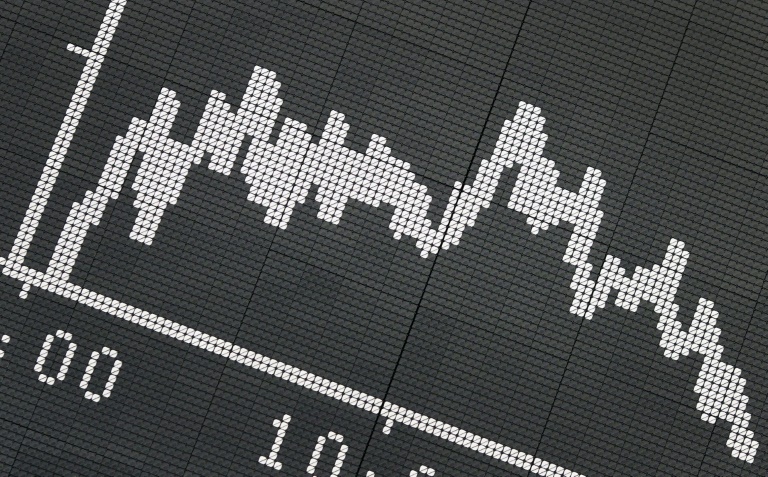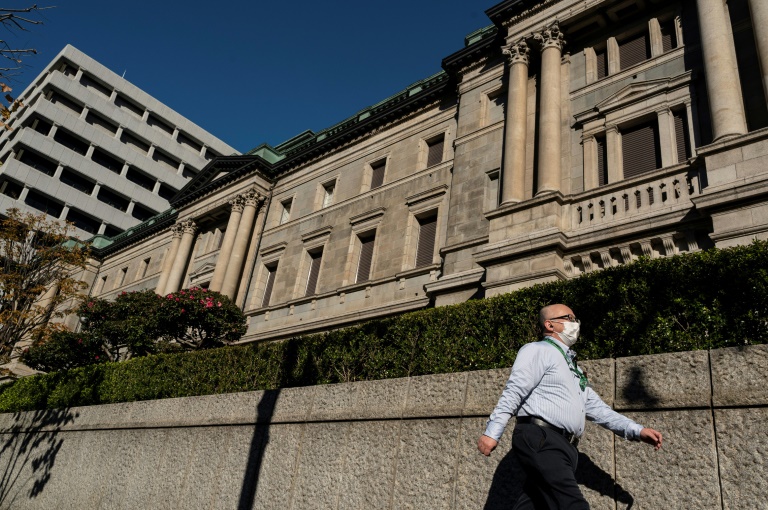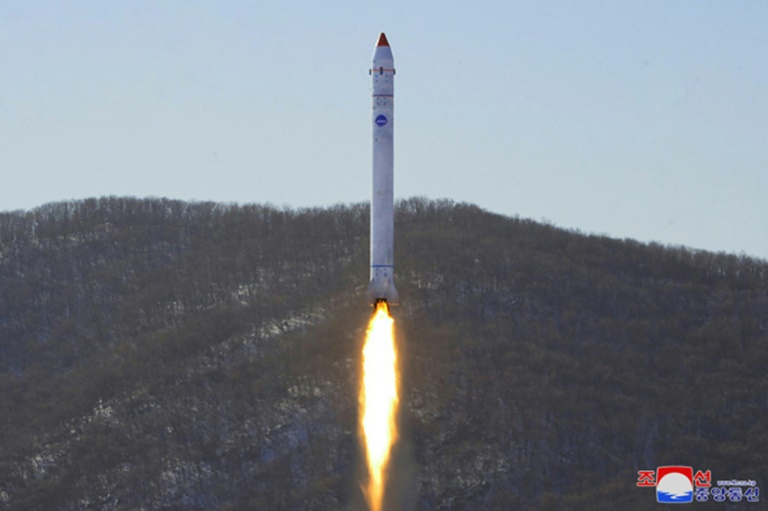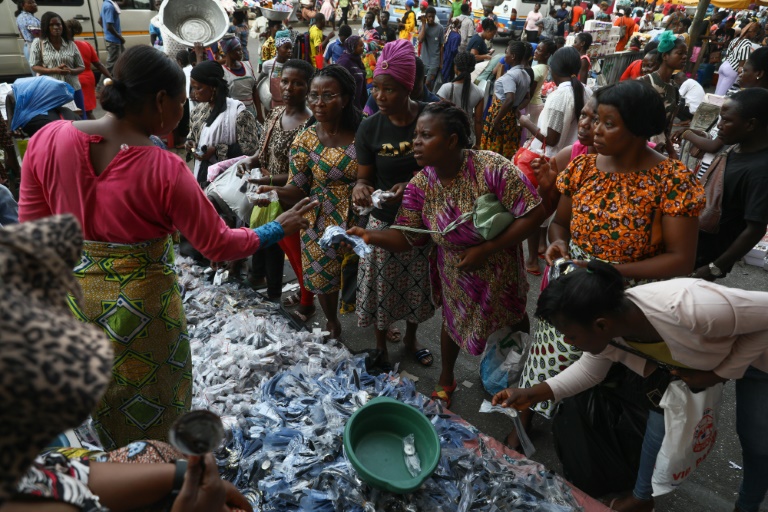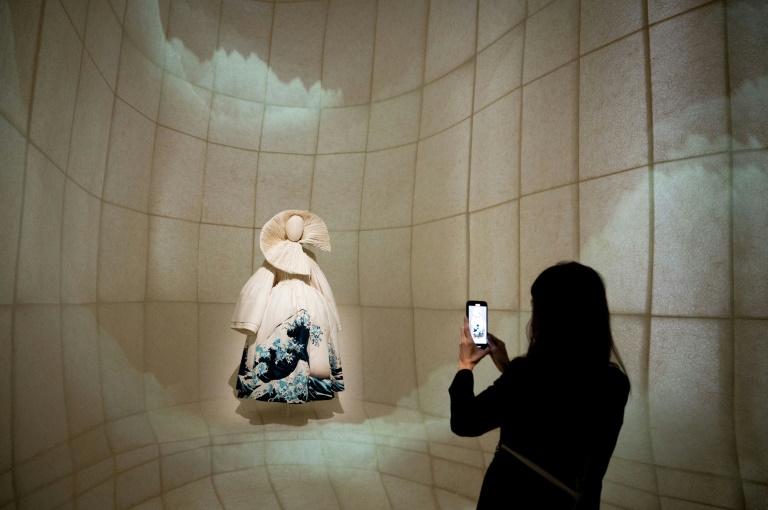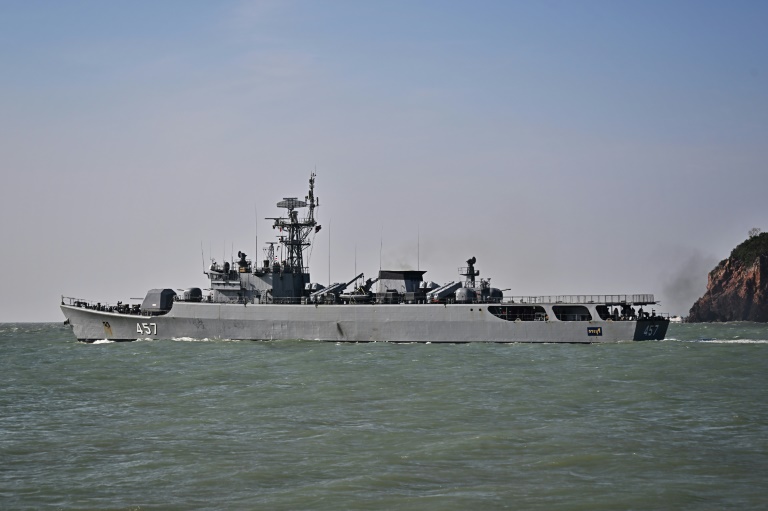Thousands of people marched through Iran's capital during a pro-government counter-rally Friday
Protests flared in Iran for an eighth straight night Friday over the death of a young woman arrested by morality police, verified social media posts showed, hours after counter-demonstrations mobilised by authorities.
At least 50 people have been killed by security forces in the anti-government protests, Iran Human Rights, an Oslo-based organisation, said — more than three times the official death toll of 17, which includes five security personnel.
The street violence, which IHR says has spread to 80 towns and cities, was triggered by the death of Mahsa Amini, a 22-year-old Kurd who had spent three days in a coma after being detained by the morality police in Tehran.
Verified footage spread on social media showed large crowds of protesters gathering in several neighbourhoods of the capital Tehran after dark, just hours after the government-backed rallies dispersed.
Some were confronted by armed anti-riot police or militia.
Iran has imposed tough restrictions on the use of the internet in a bid to hamper protesters gathering and stop the flow of images of the backlash from reaching the outside world.
– ‘Afraid of own people’ –
The United States announced Friday it was easing export restrictions on Iran to expand internet services, days after SpaceX owner Elon Musk said he would seek an exemption from sanctions to offer his company’s Starlink satellite service in the Islamic republic.
The new measures will “help counter the Iranian government’s efforts to surveil and censor its citizens,” said Secretary of State Antony Blinken.
“It is clear that the Iranian government is afraid of its own people,” he added.
On Friday, thousands took to the streets in support of the hijab at government-backed counter rallies in Tehran and other cities.
“The great demonstration of the Iranian people condemning the conspirators and the sacrileges against religion took place today,” Iran’s Mehr news agency said.
State television broadcast footage of pro-hijab demonstrators in central Tehran, many of them men but also women dressed in black chadors.
– Deadly clashes –
Amini died on September 16, three days after she was hospitalised following her arrest by the morality police, the unit responsible for enforcing the Islamic republic’s strict dress code for women.
Activists said she suffered a blow to the head in custody but this has been disputed by the Iranian authorities, who have opened an investigation.
After she was pronounced dead, angry protests flared and spread to major cities, including Isfahan, Mashhad, Shiraz and Tabriz as well as her native Kurdistan province.
In the latest violence, demonstrators clashed with security forces on Friday evening in the city of Bokan in West Azerbaijan province, said Hengaw, a second Oslo-based rights group. The report by this Kurdish organisation could not be independently verified.
In the city of Babol, in northern Mazandaran province, demonstrators were seen setting ablaze a large billboard bearing the image of Iran’s supreme leader Ayatollah Ali Khamenei, in videos shared online.
Unverified footage appeared to show protesters setting fire to a base of the feared Basij militia on Ferdowsi Street in downtown Terhan. It could not immediately be verified.
Some women demonstrators have defiantly taken off their hijabs and burned them in bonfires or symbolically cut their hair before cheering crowds, video footage spread virally on social media has shown.
– ‘Bleeding profusely’ –
Demonstrators have hurled stones at security forces, set fire to police cars and chanted anti-government slogans, state news agency IRNA reported.
“The government has responded with live ammunition, pellet guns and tear gas, according to videos shared on social media that have also shown protesters bleeding profusely,” the New York-based Center for Human Rights in Iran (CHRI) said.
Internet access has been restricted in what web monitor NetBlocks has called a “curfew-style pattern of disruptions”.
“Online platforms remained restricted and connectivity is intermittent for many users and mobile internet was disrupted for a third day on Friday,” NetBlocks said.
Measures were taken in response to “the actions carried out via these social networks by counter-revolutionaries against national security”, Iran’s Fars news agency said.
President Ebrahim Raisi, at a news conference in New York where he attended the UN General Assembly, said on Thursday: “We must differentiate between demonstrators and vandalism”.
The unrest comes at a particularly sensitive time for the leadership, as the Iranian economy remains mired in a crisis largely caused by US sanctions over its nuclear programme.
burs/dv/kir/dwo


